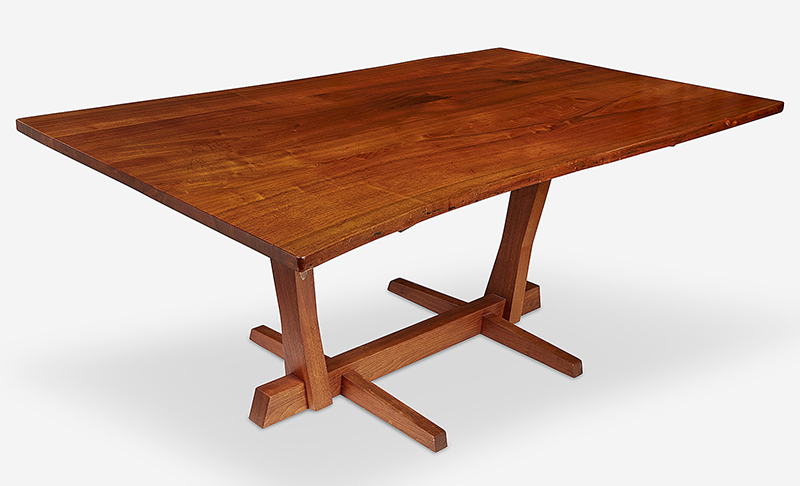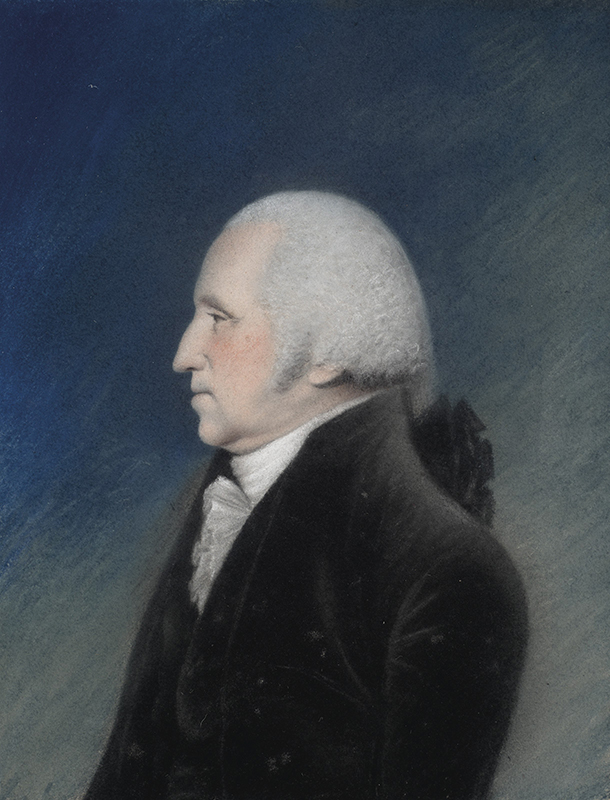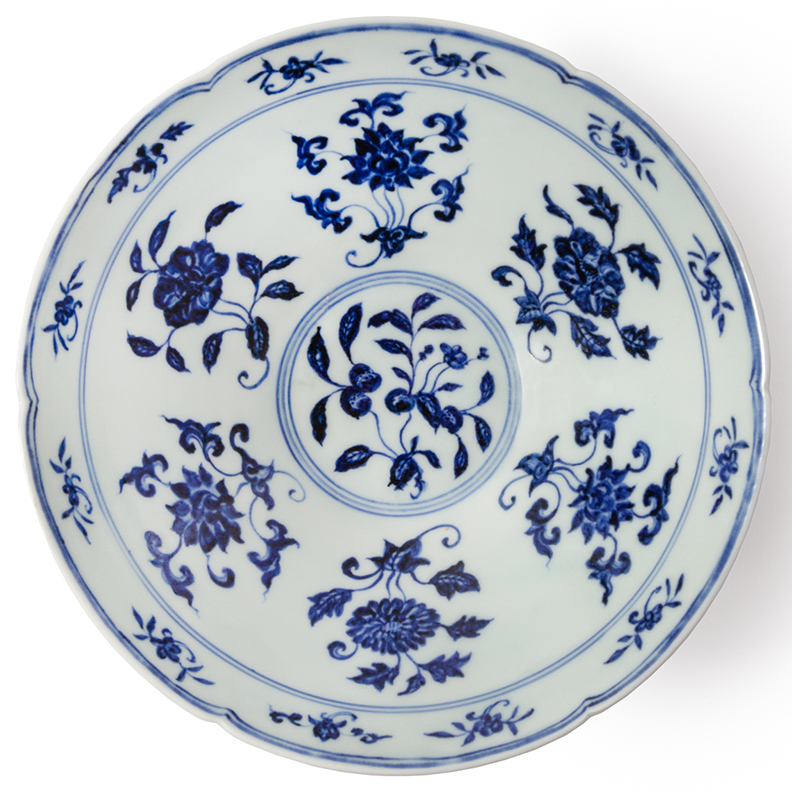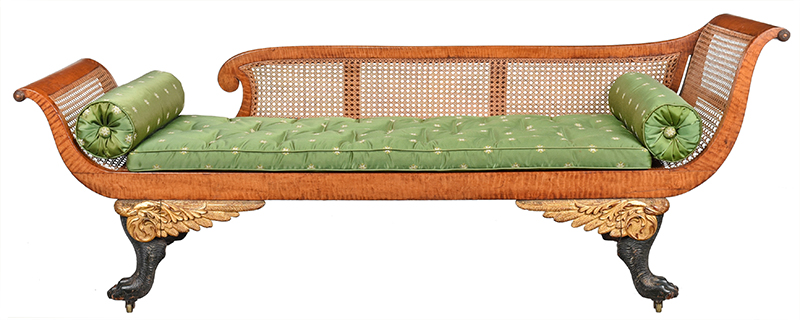The Way Forward for the Decorative Arts Market
by Taryn Clary
On March 26, the Decorative Arts Trust hosted the first panel discussion in a two-part series on the decorative arts market. As moderator of the panel, I had the privilege of speaking with four auction house professionals at the top of their respective fields: Tim Andreadis, Division Director of Decorative Arts & Design at Freeman’s; Lauren Brunk, Vice President of Brunk Auctions; John Hays, Deputy Chairman at Christie’s; and Annie Wu, Director and Senior Specialist of Asian Art at Hindman. Freeman’s generously sponsored the program.
The engaging discussion covered a range of topics, from 18th-century European ceramics to 21st-century non-fungible tokens. The panelists found parallels regarding how their institutions and clients reacted to the COVID-19 pandemic and revealed how they are looking to one another for inspiration as they determine a path forward for their segments of a quickly evolving art market landscape. Three main takeaways from the discussion shed light on the current state of the market and what we can forecast for the future of buying and selling decorative arts, design, and antiques.
The Staying Power of Digital
The COVID-19 pandemic brought a host of new challenges and opportunities for auction houses, requiring that sales once held in packed and bustling auction rooms be moved to fully online platforms. Our discussion revealed that all of these digital shifts that seemed to come together at the drop of a hat in
March 2020 were part of long-term plans already in place at each auction house. These plans included the expansion of websites and social media presences, the rollout of digital catalogues in place of print, the beginning of live-streamed auctions and virtual programming, and an overarching digital-first mentality to cater to a growing base of online bidders. The pandemic provided the impetus to accelerate these plans and tested the strength and permanence of the digital infrastructure.
Lauren Brunk sagely referred to the underlying endeavors that make this digital experience work as “trust building.” With clients unable to visit the galleries to view a George Nakashima table (figure 1) or a portrait of George Washington (figure 2) in person, auction houses rose to the challenge of providing extensive scholarship, the highest quality visual resources, and new tools to instill the confidence to buy art sight unseen. The success of these initiatives are evident in sale roundups of 2020, where online-only auctions soared past the billion dollar mark for the first time in history. Given this success, even as businesses return to in-person operations, there is no going back on the advances auction houses have made in the digital sphere.
A Globalized and Growing Audience
Expanded digital outreach has enabled auction houses to reach exponentially more people across the globe. Annie Wu noted that the fastest growing markets continue to be in Asia, where there is a developing group of millennials with increasing spending power and the desire to start collections (figure 3). To meet new audiences and drive tremendous levels of participation worldwide, auction houses are providing more entry points to collecting than ever, with an increase in cross-category sales that unite previously siloed departments and the introduction of entirely new categories of art and luxury. The same month of the panel, Christie’s made headlines with the $69,000,000 dollar sale of a non-fungible token, a JPEG file by digital artist Beeple. John Hays contextualized the development in his 40-year career at Christie’s, and described the digital art space as “the wild west.” What does this new category signal for those of us working in the realm of physical objects? How do we attract that next generation of collectors and enthusiasts to decorative art to ensure there still is a market going forward?
Tim Andreadis has found that “questions around craftsmanship and rarity are maybe not quite as important to today’s group of collectors,” but that pieces by big names in design will continue to find buyers. Brunk also underscored the importance of storytelling and impeccable provenance. The William N. Banks, Jr. Estate sale at Brunk in September 2020 (figure 4) far exceeded its pre-auction estimate and indicated a significant uptick in interest in American Classical style furniture not seen in decades. Strong single-owner collections like this will continue to create demand because of the unique acquisition history they have to offer. As Hays noted, provenance “isn’t a tangible thing and never has been,” and for today’s collectors, “owning the provenance, but letting the whole world have access to it, is a dynamic thing.”
No Shortage of Surprises
In sharing memorable auction stories from the course of their careers, the four panelists concluded with an understanding that the market will always be a source of surprise. The week before the panel discussion, a 15th-century Chinese bowl purchased for $35 dollars at a yard sale fetched over $700,000 at Sotheby’s (figure 5). Extremely strong results during a pandemic when one may have expected a lull in consignments was perhaps the biggest surprise of all. What comes next? There is no predicting what objects will perform best at auction or what trends may prove long lasting or ephemeral, but the forecast for decorative arts and design is a positive one.
Taryn Clary is a Cataloguer, 20th Century Design at Sotheby’s and is a contributing writer for the Decorative Arts Trust.
Taryn moderated the March virtual panel discussion for the Decorative Arts Trust, which you can watch on our YouTube channel.
A print version of this article was published in The Magazine of the Decorative Arts Trust, one of our most popular member benefits. Join today!





